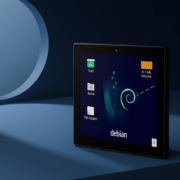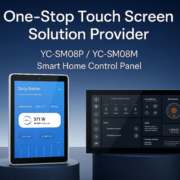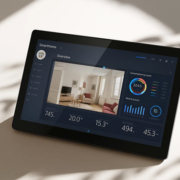Smart Home Automation Touch Panel Supplier
In today’s fast-paced world, home automation is no longer a luxury—it’s becoming a necessity. With the growing demand for smart devices and systems that make our homes more comfortable, efficient, and secure, the role of smart home automation touch panels has never been more critical. These panels serve as the central control hub, allowing homeowners to manage various smart devices like lights, thermostats, security systems, and entertainment devices from one interface. In this article, we will explore the benefits and features of smart home automation touch panels, and how partnering with a reliable supplier can enhance your home automation experience.
What is a Smart Home Automation Touch Panel?
A smart home automation touch panel is a touchscreen interface used to control and monitor all smart devices in a home. Whether it’s controlling the lighting, adjusting the temperature, monitoring security cameras, or managing energy usage, these touch panels allow users to interact with their home automation system easily. By combining intuitive touch controls with the power of cloud connectivity, a smart home automation touch panel makes managing your home smarter and more efficient.
Typically installed in central locations, such as living rooms, kitchens, or entryways, these panels offer a sleek and modern interface for controlling all devices. Voice assistants, mobile apps, and smart speakers may complement these panels, but the touch panel remains the most reliable and hands-on option for managing multiple smart devices at once.
Key Features of Smart Home Automation Touch Panels
- Centralized Control for Multiple Devices
- A smart home automation touch panel enables homeowners to control multiple devices from a single interface. Lights, thermostats, door locks, cameras, and entertainment systems can be easily managed, allowing for a more seamless, centralized home automation experience. You don’t need multiple apps or remotes—everything is at your fingertips.
- User-Friendly Interface
- The user interface (UI) of a smart home automation touch panel is designed for simplicity and ease of use. Large icons, intuitive layouts, and responsive touch functionality make it easy for anyone to operate, even for those who aren’t tech-savvy. The customizable UI allows homeowners to organize their control options in a way that best fits their needs.
- Remote Control and Monitoring
- Many smart home automation panels come equipped with remote connectivity, enabling homeowners to monitor and control their home from anywhere using their smartphone or tablet. Whether you’re on vacation, at work, or just in a different room, you can always check the status of your home systems and make adjustments on the go.
- Integration with Voice Assistants
- Integration with voice assistants like Amazon Alexa, Google Assistant, or Apple Siri is a common feature in modern smart home touch panels. This allows users to control their devices via voice commands, making it easier to adjust settings hands-free. For example, you can simply say, “Alexa, set the temperature to 72°F” or “Hey Google, turn off the lights in the living room.”
- Energy Management
- Many smart home automation panels feature energy monitoring tools that provide real-time feedback on energy usage. Homeowners can track energy consumption, identify inefficiencies, and make adjustments to save energy and reduce utility bills. The system can also automate energy-saving actions, such as dimming lights or adjusting the thermostat when the house is empty.
- Security Features
- Smart home automation panels often include security features, allowing homeowners to monitor cameras, unlock doors, or view doorbell footage directly from the panel. Real-time notifications can alert you to potential security breaches, and many systems allow remote access to ensure peace of mind while you’re away.
- Customization and Personalization
- Many smart home touch panels are fully customizable to suit the homeowner’s specific needs. Custom scenes, lighting preferences, room temperature settings, and security modes can be programmed to fit your lifestyle. For example, you could set a “Good Morning” scene to turn on the lights, adjust the temperature, and start the coffee machine with one touch or voice command.
Benefits of Working with a Smart Home Automation Touch Panel Supplier
- Tailored Solutions to Fit Your Needs
- A reliable smart home automation touch panel supplier can offer tailored solutions for your specific requirements. Whether you’re looking for a simple system to control lights and heating or a comprehensive smart home solution that integrates security, entertainment, and energy management, the right supplier will provide the customization needed to meet your needs.
- High-Quality and Reliable Products
- When selecting a smart home automation touch panel supplier, it’s essential to work with a company that offers high-quality products. These panels should be durable, reliable, and built to last, with superior touch responsiveness and display clarity. A reputable supplier will also ensure that their products meet the highest industry standards for performance and safety.
- Seamless Integration with Existing Smart Devices
- A key benefit of working with a smart home automation touch panel supplier is the ease of integration with other smart devices. Whether it’s smart lighting, smart thermostats, security cameras, or voice assistants, the supplier can ensure that your new panel integrates seamlessly with your existing system. This helps you build a fully functional and cohesive smart home environment.
- Ongoing Support and Maintenance
- A reliable supplier will offer ongoing support and maintenance services to ensure that your smart home touch panel remains functional and up-to-date. Whether you need help with setup, troubleshooting, or software updates, a good supplier will provide assistance to keep your system running smoothly over the long term.
- Cost-Effective Solutions
- Depending on the supplier, smart home automation touch panels can be surprisingly affordable, especially when you consider the convenience and efficiency they bring to your home. Whether you’re building a new smart home from scratch or upgrading an existing setup, suppliers often offer scalable pricing models to suit various budgets and needs.
Applications of Smart Home Automation Touch Panels
-
Lighting and Climate Control
-
A major use of smart home automation touch panels is controlling lighting and climate in your home. With the ability to dim lights, adjust thermostats, or even program schedules, these panels help improve comfort and energy efficiency.
-
-
Security and Surveillance
-
Smart home automation panels allow homeowners to monitor security cameras, lock doors, and activate alarm systems, providing enhanced home security. Some panels also integrate with smart doorbells for real-time video feeds and two-way communication.
-
-
Entertainment Control
-
Modern smart homes integrate entertainment systems with their automation panels, allowing users to control smart TVs, audio systems, and streaming devices from a single interface. Whether you want to change the channel, adjust volume, or play your favorite music, these panels make it easy to manage home entertainment.
-
-
Energy Management
-
These panels allow users to monitor energy consumption, turn off devices remotely, and automate energy-saving actions. For homeowners looking to reduce energy bills and improve sustainability, a smart home automation touch panel is an essential tool.
-
-
Home Automation Scenes
-
With the ability to create personalized automation scenes, users can customize settings for different times of the day or activities. For example, a “Movie Night” scene might dim the lights, close the blinds, and turn on the TV with one button press or voice command.
-
Choosing the Right Smart Home Automation Touch Panel Supplier
When choosing a smart home automation touch panel supplier, consider the following factors:
- Customization Options: Ensure the supplier offers a wide range of customization options to meet your specific needs.
- Quality and Durability: Choose a supplier with a reputation for high-quality, durable products.
- Integration with Smart Devices: Verify that the supplier’s panels can seamlessly integrate with your existing smart home devices and systems.
- Support and Service: Select a supplier that offers strong customer support and ongoing maintenance services.
- Pricing: Compare pricing to find a solution that fits within your budget while meeting your home automation needs.
A smart home automation touch panel is a game-changing device that allows homeowners to manage and control various aspects of their home with ease. From lighting and climate control to security and entertainment, these panels provide a user-friendly interface to streamline home automation systems. By working with a reliable supplier, you can ensure that you receive a customizable, high-quality, and integrated solution that fits your specific needs. Embrace the future of home living with a smart home automation touch panel that makes life more convenient, efficient, and secure.










